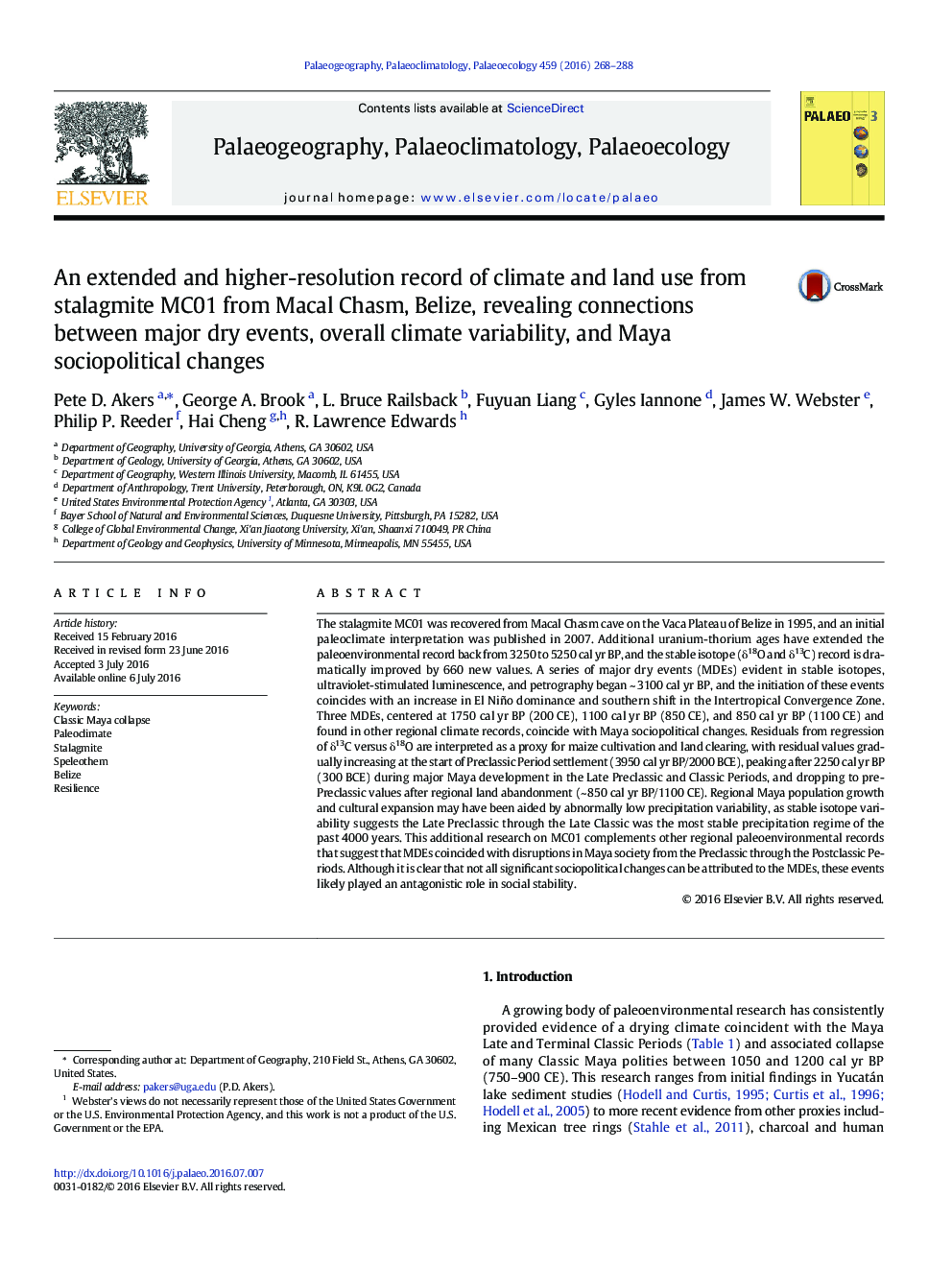| کد مقاله | کد نشریه | سال انتشار | مقاله انگلیسی | نسخه تمام متن |
|---|---|---|---|---|
| 4465636 | 1622132 | 2016 | 21 صفحه PDF | دانلود رایگان |

• Major dry events found in new stalagmite data and other regional climate records
• Regional dry events often coincide with periods of Maya sociopolitical change.
• Peak Maya development coincides with abnormally low stable isotope variability.
• Residuals from regression of δ13C versus δ18O appear to track land use changes.
• Onset of major dry events at 3100 cal yr BP coincides with ENSO and ITCZ changes.
The stalagmite MC01 was recovered from Macal Chasm cave on the Vaca Plateau of Belize in 1995, and an initial paleoclimate interpretation was published in 2007. Additional uranium-thorium ages have extended the paleoenvironmental record back from 3250 to 5250 cal yr BP, and the stable isotope (δ18O and δ13C) record is dramatically improved by 660 new values. A series of major dry events (MDEs) evident in stable isotopes, ultraviolet-stimulated luminescence, and petrography began ~ 3100 cal yr BP, and the initiation of these events coincides with an increase in El Niño dominance and southern shift in the Intertropical Convergence Zone. Three MDEs, centered at 1750 cal yr BP (200 CE), 1100 cal yr BP (850 CE), and 850 cal yr BP (1100 CE) and found in other regional climate records, coincide with Maya sociopolitical changes. Residuals from regression of δ13C versus δ18O are interpreted as a proxy for maize cultivation and land clearing, with residual values gradually increasing at the start of Preclassic Period settlement (3950 cal yr BP/2000 BCE), peaking after 2250 cal yr BP (300 BCE) during major Maya development in the Late Preclassic and Classic Periods, and dropping to pre-Preclassic values after regional land abandonment (~ 850 cal yr BP/1100 CE). Regional Maya population growth and cultural expansion may have been aided by abnormally low precipitation variability, as stable isotope variability suggests the Late Preclassic through the Late Classic was the most stable precipitation regime of the past 4000 years. This additional research on MC01 complements other regional paleoenvironmental records that suggest that MDEs coincided with disruptions in Maya society from the Preclassic through the Postclassic Periods. Although it is clear that not all significant sociopolitical changes can be attributed to the MDEs, these events likely played an antagonistic role in social stability.
Journal: Palaeogeography, Palaeoclimatology, Palaeoecology - Volume 459, 1 October 2016, Pages 268–288